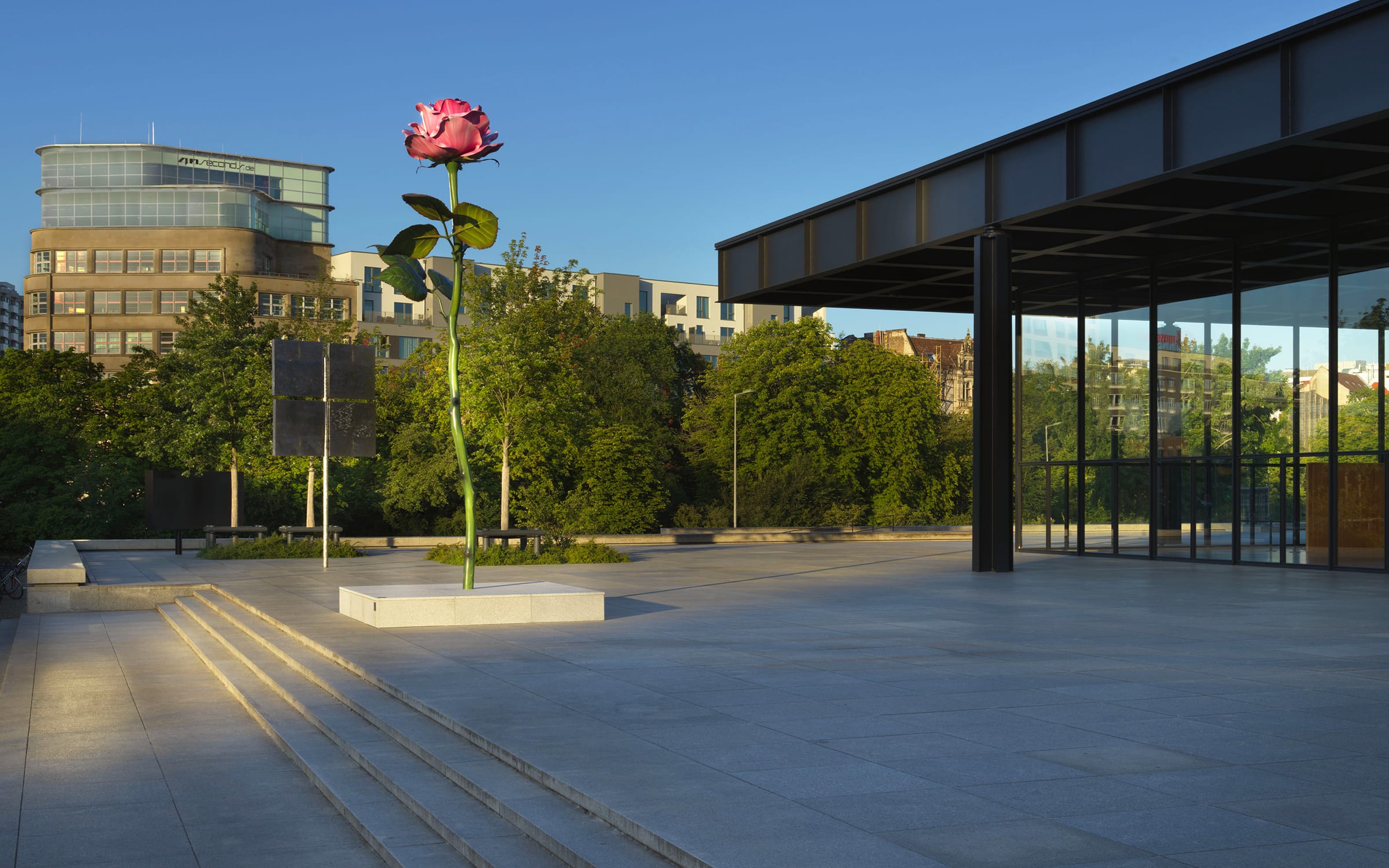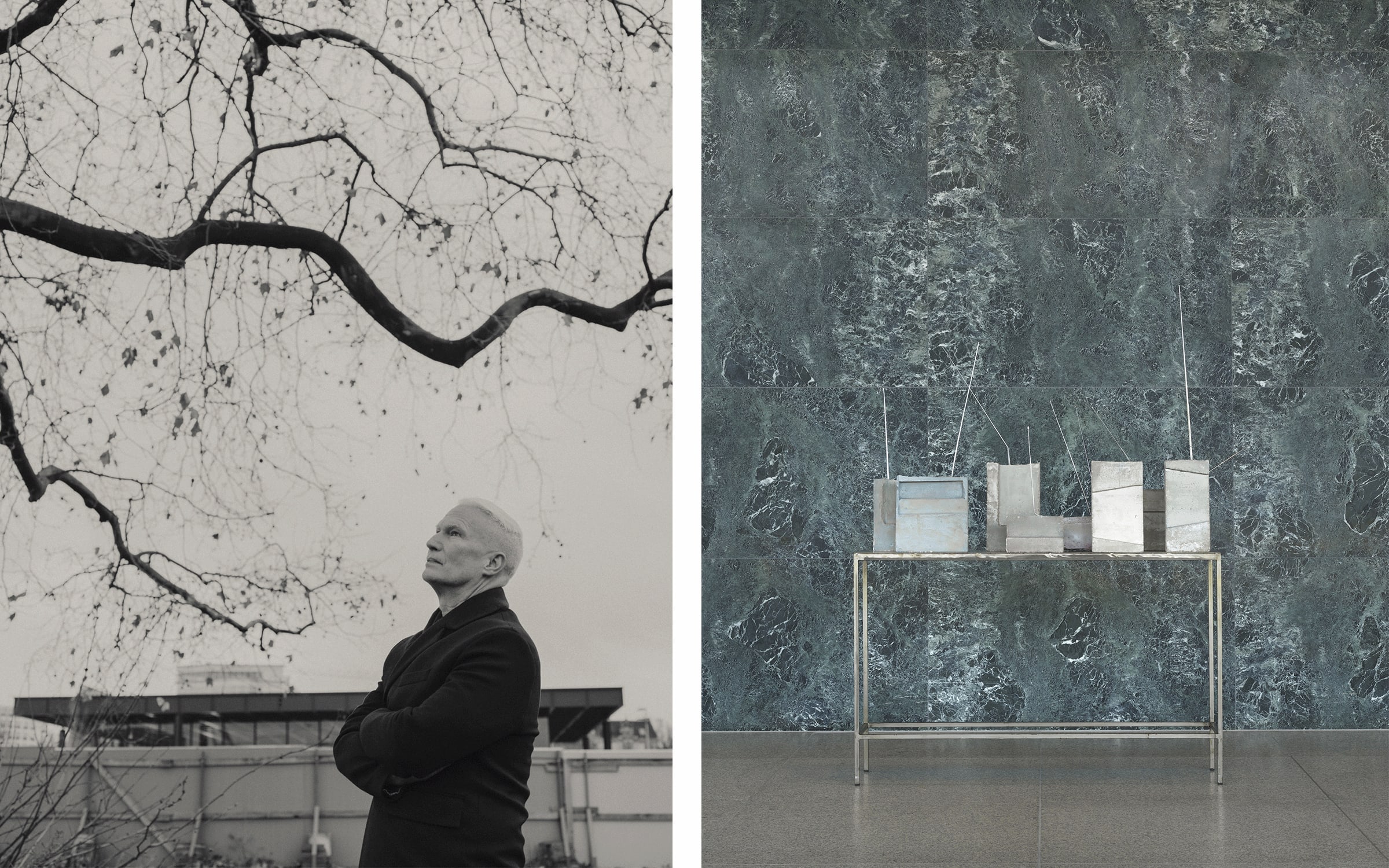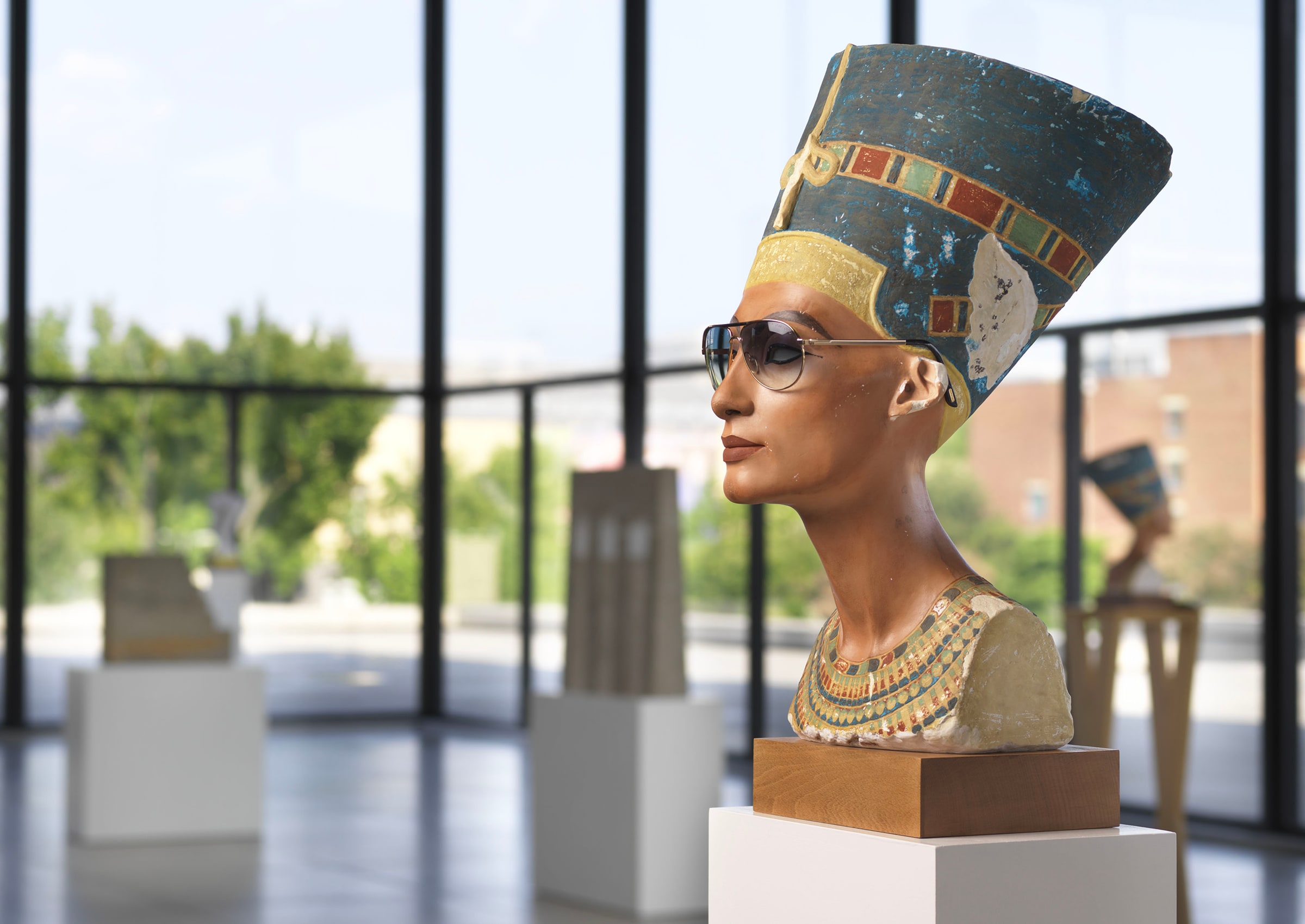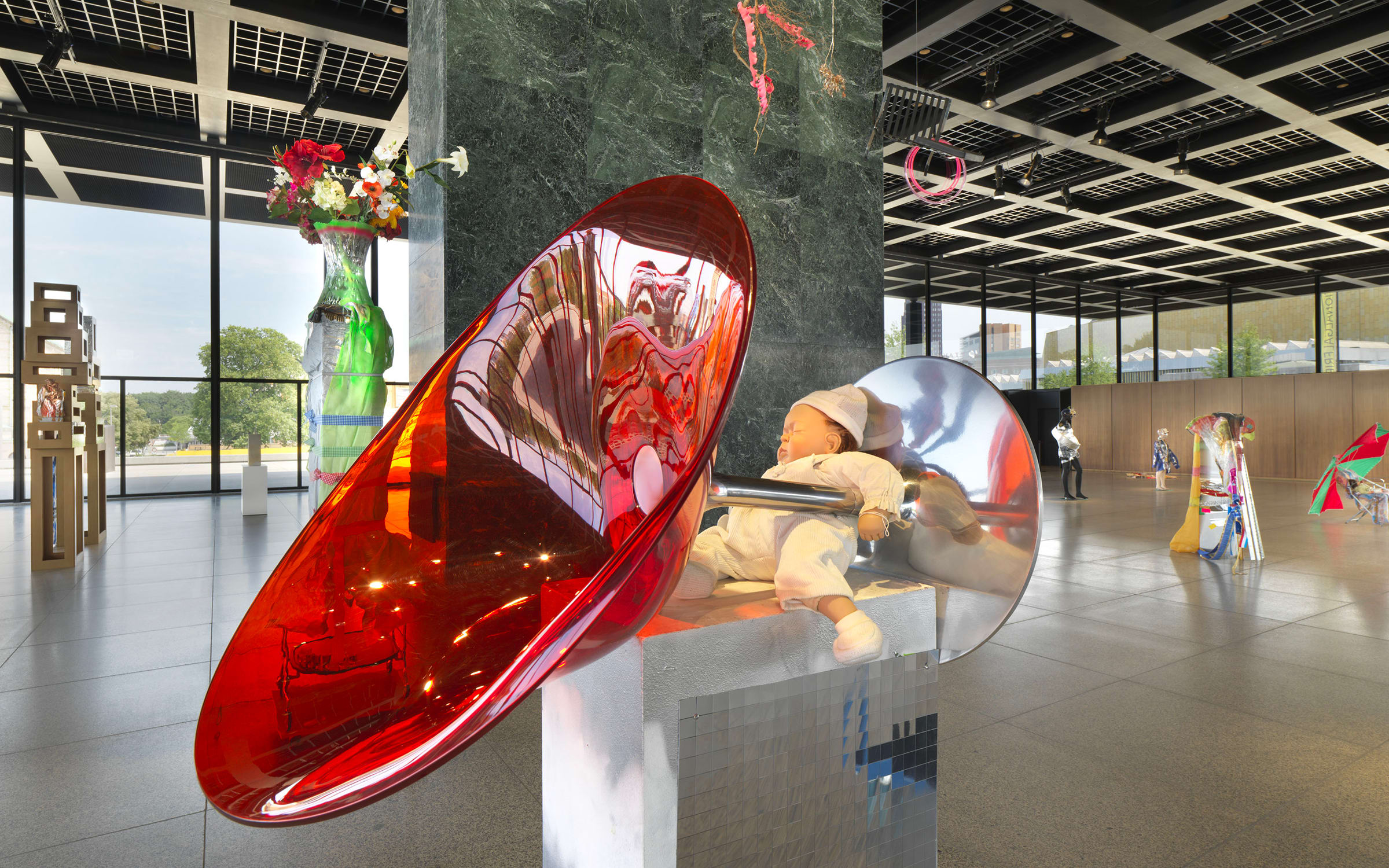 Installation view of exhibition ‘75/75’ by Isa Genzken at Berlin’s Neue Nationalgalerie. Artwork on view PINK ROSE, 2016/2023. Fredriksen Family Collection. Photograph by Nationalgalerie – Staatliche Museen zu Berlin / Jens Ziehe. Courtesy Galerie Buchholz © VG Bild-Kunst, Bonn 2023.
Installation view of exhibition ‘75/75’ by Isa Genzken at Berlin’s Neue Nationalgalerie. Artwork on view PINK ROSE, 2016/2023. Fredriksen Family Collection. Photograph by Nationalgalerie – Staatliche Museen zu Berlin / Jens Ziehe. Courtesy Galerie Buchholz © VG Bild-Kunst, Bonn 2023. Left: Klaus Biesenbach by Mustafah Abdulaziz. Right: Installation view of exhibition ‘75/75’ by Isa Genzken at Berlin’s Neue Nationalgalerie. WELTEMPFÄNGER, 1988–89 (Private collection London). Photograph by Nationalgalerie – Staatliche Museen zu Berlin / Jens Ziehe. Courtesy Galerie Buchholz © VG Bild-Kunst, Bonn 2023.
Left: Klaus Biesenbach by Mustafah Abdulaziz. Right: Installation view of exhibition ‘75/75’ by Isa Genzken at Berlin’s Neue Nationalgalerie. WELTEMPFÄNGER, 1988–89 (Private collection London). Photograph by Nationalgalerie – Staatliche Museen zu Berlin / Jens Ziehe. Courtesy Galerie Buchholz © VG Bild-Kunst, Bonn 2023. Installation view of exhibition ‘75/75’ by Isa Genzken at Berlin’s Neue Nationalgalerie. NOFRETETE – DAS ORIGINAL, 2012 (Private collection Rhineland). Photograph by Nationalgalerie – Staatliche Museen zu Berlin / Jens Ziehe. Courtesy Galerie Buchholz © VG Bild-Kunst, Bonn 2023.
Installation view of exhibition ‘75/75’ by Isa Genzken at Berlin’s Neue Nationalgalerie. NOFRETETE – DAS ORIGINAL, 2012 (Private collection Rhineland). Photograph by Nationalgalerie – Staatliche Museen zu Berlin / Jens Ziehe. Courtesy Galerie Buchholz © VG Bild-Kunst, Bonn 2023. Isa Genzken. 75/75“, Neue Nationalgalerie, 2023. DER JUNGE GEWICHTHEBER, 2004.(Private collection Rhineland). Photograph by Nationalgalerie – Staatliche Museen zu Berlin / Jens Ziehe. Courtesy Galerie Buchholz © VG Bild-Kunst, Bonn 2023.
Isa Genzken. 75/75“, Neue Nationalgalerie, 2023. DER JUNGE GEWICHTHEBER, 2004.(Private collection Rhineland). Photograph by Nationalgalerie – Staatliche Museen zu Berlin / Jens Ziehe. Courtesy Galerie Buchholz © VG Bild-Kunst, Bonn 2023.






